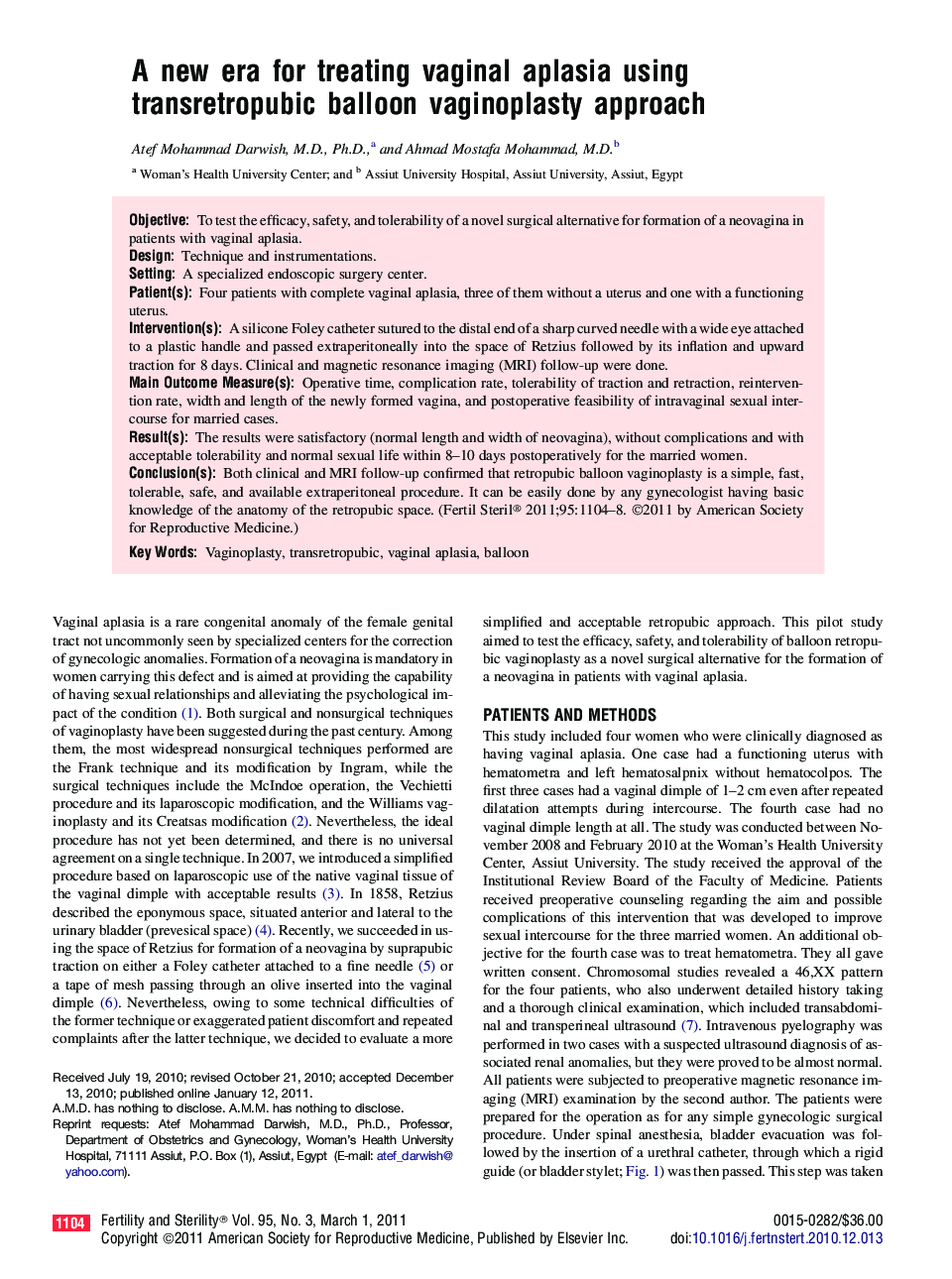| Article ID | Journal | Published Year | Pages | File Type |
|---|---|---|---|---|
| 3932426 | Fertility and Sterility | 2011 | 5 Pages |
ObjectiveTo test the efficacy, safety, and tolerability of a novel surgical alternative for formation of a neovagina in patients with vaginal aplasia.DesignTechnique and instrumentations.SettingA specialized endoscopic surgery center.Patient(s)Four patients with complete vaginal aplasia, three of them without a uterus and one with a functioning uterus.Intervention(s)A silicone Foley catheter sutured to the distal end of a sharp curved needle with a wide eye attached to a plastic handle and passed extraperitoneally into the space of Retzius followed by its inflation and upward traction for 8 days. Clinical and magnetic resonance imaging (MRI) follow-up were done.Main Outcome Measure(s)Operative time, complication rate, tolerability of traction and retraction, reintervention rate, width and length of the newly formed vagina, and postoperative feasibility of intravaginal sexual intercourse for married cases.Result(s)The results were satisfactory (normal length and width of neovagina), without complications and with acceptable tolerability and normal sexual life within 8–10 days postoperatively for the married women.Conclusion(s)Both clinical and MRI follow-up confirmed that retropubic balloon vaginoplasty is a simple, fast, tolerable, safe, and available extraperitoneal procedure. It can be easily done by any gynecologist having basic knowledge of the anatomy of the retropubic space.
